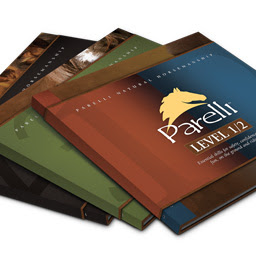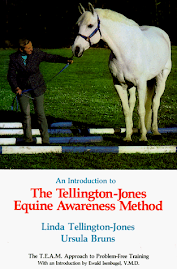1—Heart and Desire
Watch a mare and foal together and you’ll see the strongest example of heart and desire. That’s how strong the bond could be and should be between horse and human. But people can have too many goals and put their heart and desire into winning or performing rather than with the horse. It’s okay to have a strong desire for competition as long as it doesn’t get ahead of the relationship with the horse.
2—Respect
We have to teach the horse to respect us. Respect from the horse is measured by appropriate response and quality and length of attention span. As humans, we ultimately need to respect the pure nature inside of the horse. Respect from both, in the end, is mental collection.
3—Impulsion
I think of impulsion foremost as emotional collection. The goal is to get the horse to want to synchronize with your energy and emotion. We need to have absolute control over our emotions so that we are calm, cool and collected for the horse even when things get going fast, or when we want things to go fast.
4—Flexion
For me, flexion is the shaping of the whole horse mentally and physically, and learning to be very fluid and flexible in our own bodies so horses match and mirror us. Every movement we ask of the horse has a certain dynamic shape the horse’s body should be in to optimize its performance, from walking to piaffe.
5—Attitude and Focus—Positive, Progressive and Natural
Your attitude needs to be positive, progressive and natural, and people who focus on bringing all three together really make great leaders for their horses. I see people who are kind to their horses, but they’re not going anywhere, and most horses are not happy doing the same things over and over again. Other people are very mechanical and use whatever bits and gadgets it takes. And there are people who are progressive and natural, but not really positive.
6—Feel
Horses have to go by feel in order to understand us, especially when we’re riding. So the feel we give them, whether we’re fluid or stiff, is how they are going to respond. But what gives you feel? In any sport or endeavor, there is usually something you need to focus on to become more natural. People who are training to jump hurdles are taught to look at a spot on the horizon, not the hurdle, and feel going over the hurdles. For us, it’s being positive, progressive and natural that will give you feel.
7—Timing
Timing is really important because horses are very rhythmic animals. You feel for the timing through your attitude and focus, and if you make even a suggestion at the right time, everything becomes easy. For example, when we ask a horse to turn but we use our legs too soon, we’ve pushed the horse like a caterpillar, and the front and middle haven’t started that way yet.
8—Balance
From birth, a horse learns to do everything in balance. The thought of movement starts in the horse’s mind. He shapes his body, gets his weight right and then moves his feet. For us, the only way for balance to be second nature is to have focus, feel and timing. When we’re on a horse we should not have any negative effect on its movement.
9—Savvy
When you combine these ingredients and start getting repeatable results, that’s Savvy. Savvy is second nature to me now, but I rode horses thousands of hours and still didn’t have any real Savvy. But we often have to have that kind of experience to get real Savvy, and once you have it, it feels dysfunctional if you do something without it, like driving a car with a loose wheel.
10—Experience
If your heart and desire are to get to a certain savvy level, and you start putting huge effort into real mastery, this is the point where it becomes addictive. That’s when it’s way beyond a physical thing—way more than riding. Your experience after you get to a certain level will reveal productive results ten times faster than all the hours you put in before that, making hoof prints in the sand and wearing out riding pants and saddles.











































































